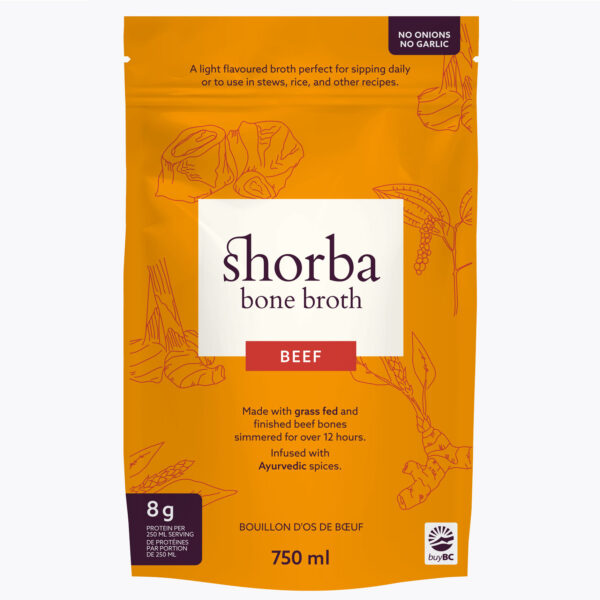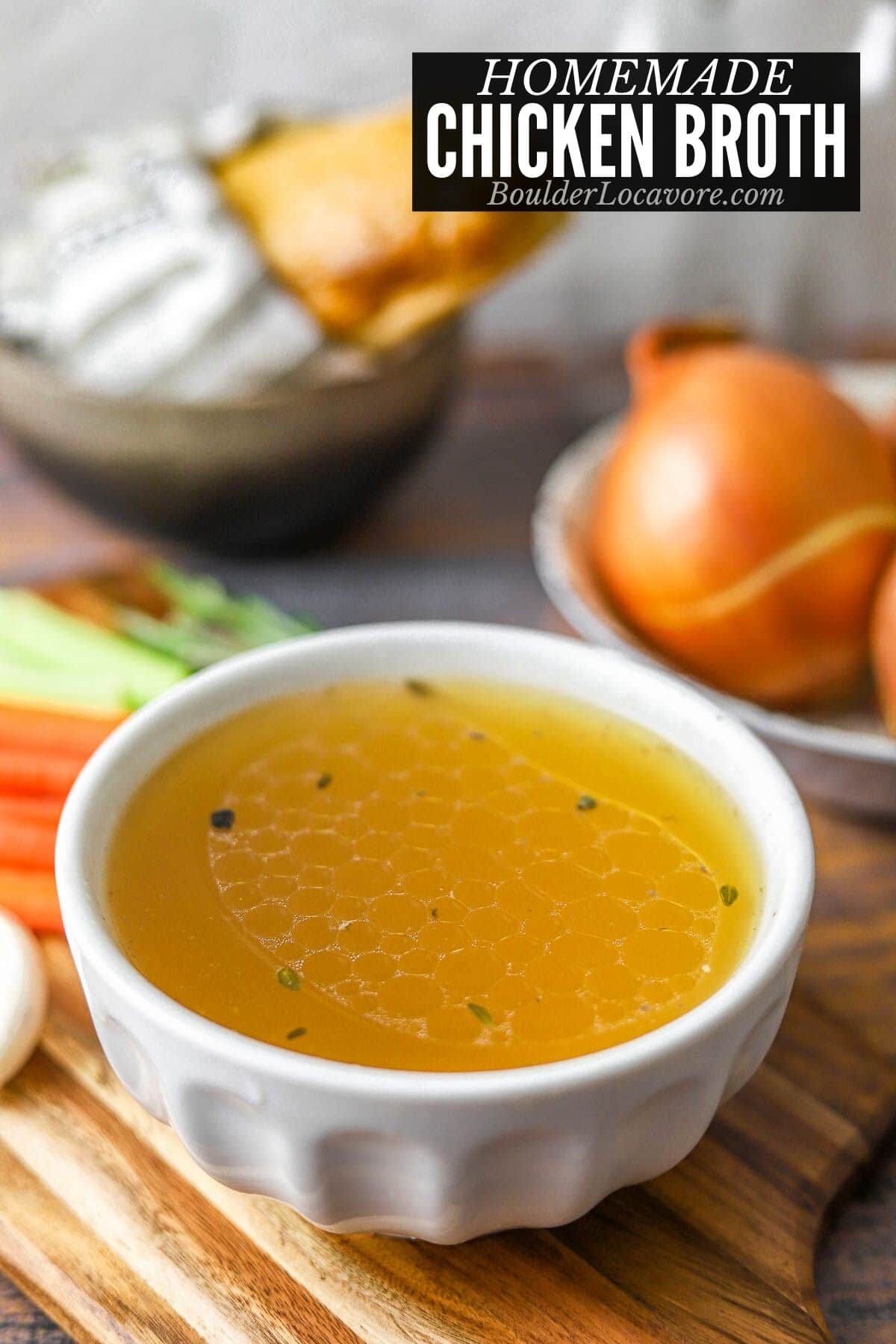How to Cook Better Grains with Organic Bone Broths
How to Cook Better Grains with Organic Bone Broths
Blog Article
The Ultimate Overview to Delighting In and making Organic Bone Broths in the house
Bone brew has gotten attention for its numerous health and wellness benefits and cooking adaptability. Crafting organic bone brew at home allows individuals to regulate the top quality of ingredients, making certain a nutritious result. Comprehending the selection of bones, important flavor components, and correct cooking techniques is essential. As the process unfolds, one may ask yourself how to boost their broth beyond the basics and include it right into everyday dishes for boosted flavor and nourishment.
Comprehending the Health Perks of Bone Broth
Bone broth has actually been a staple in different cuisines for centuries, its wellness benefits have gotten significant attention in current years. Rich in collagen, amino acids, and minerals, bone brew is often touted for its potential to sustain joint wellness, enhance intestine function, and enhance skin flexibility. The jelly stemmed from prepared bones might help food digestion and assistance seal the digestive tract cellular lining, possibly alleviating issues like leaking digestive tract syndrome.Furthermore, the presence of nutrients such as glucosamine and chondroitin may add to lowered inflammation and pain relief in joints. Additionally, bone broth is moisturizing and can act as a nutritious base for stews and soups. Several proponents also assert that it enhances the body immune system, thanks to its mineral profile. In general, the renewal of rate of interest in bone broth is linked to its perceived ability to advertise general well-being and support numerous physical functions.
Picking the Right Bones for Maximum Flavor and Nourishment
What aspects should one think about when picking bones for brew preparation? The kind of bones utilized significantly impacts both flavor and dietary value. It is important to choose bones that include a mix of marrow bones, joint bones, and weighty bones. Marrow bones give rich tastes and healthy fats, while joint bones contribute collagen, boosting the broth's nutritional profile.Additionally, sourcing bones from pasture-raised or grass-fed pets warranties higher top quality and more nutrients, as these animals are commonly much healthier. The quality of the bones is additionally crucial; choosing bones from neighborhood butchers or farmers' markets can assure excellent flavor. Bone size matters too; larger bones launch more jelly, resulting in a richer brew. Thinking about the kind of animal-- fish, chicken, or beef-- can affect the final preference, permitting for versatile brew options customized to specific preferences.
Necessary Ingredients for a Delicious Bone Broth

Quality Bone Option
The foundation of a flavorful bone brew depends on the careful selection of premium bones. Sourcing natural, grass-fed or pasture-raised bones is crucial, as these alternatives are more probable to be without damaging additives and offer premium nutrients. Varieties such as chicken, beef, or lamb bones each present distinct tastes and wellness advantages. Bone types, including marrow bones, knuckle bones, and oxtails, contribute jelly and collagen, enhancing the broth's texture. Selecting bones with a mix of meat and connective tissue can also include richness and deepness. Furthermore, picking bones with noticeable marrow guarantees a nutrient-dense brew, raising the total top quality. Eventually, investing time in quality bone choice lays the groundwork for a tasty and beneficial brew.
Aromatic Taste Enhancers
Selecting high-grade bones sets the phase for a healthy and abundant bone broth, yet it is the addition of fragrant taste boosters that absolutely elevates the meal. Components such as onions, garlic, and carrots not just present sweet taste however also contribute deepness to the broth. Fresh natural herbs like bay, parsley, and thyme leaves add a fragrant note, while flavors such as black peppercorns and cloves introduce warmth and intricacy. Furthermore, including a splash of apple cider vinegar can assist remove minerals from the bones, enhancing the broth. These flavor enhancers create an unified mix, transforming an easy broth right into a tasty foundation for stews, soups, or sauces, making it a versatile component in any kind of culinary arsenal.
Step-by-Step Overview to Making Bone Broth at Home
Developing bone broth at home can be a gratifying culinary undertaking that boosts both flavor and nourishment in various recipes. To start, one must select top quality bones, ideally from grass-fed or natural sources. Roasting the bones at 400 ° F for about half an hour can escalate the flavor. Next off, transfer the baked bones to a large pot or slow stove and cover them with chilly water. Adding a dash of vinegar helps remove minerals from the bones.Include aromatic veggies like onions, carrots, and celery for added depth, together with natural herbs and seasonings as preferred. Bring the mixture to a boil, then minimize to a simmer. It is vital to allow the broth simmer for a minimum of 12 hours, however much longer is better for maximum splendor. Lastly, strain the brew through a fine-mesh filter and shop it in airtight containers, prepared to boost dishes with its healthy essence.

Tips for Improving Your Bone Brew Simmer
While simmering bone brew, maintaining the ideal temperature and timing is vital for attaining a rich and tasty outcome. A gentle simmer, ideally between 190 ° F and 210 ° F, aids remove maximum nutrients and tastes without boiling, which can make the broth cloudy. It is a good idea to monitor the pot carefully, readjusting the heat as required to keep this simmer.Timing is likewise crucial; a longer simmer, commonly ranging from 12 to content 48 hours, enables deeper flavor removal and collagen release. For hen bones, a 12 to 24-hour simmer is enough, while beef bones profit from longer cooking times.Additionally, skimming any foam or impurities that rise to the surface area throughout the first few hours can boost the broth's quality and taste. Lastly, making certain the pot is covered during simmering aids to maintain moisture and intensify the tastes, creating an extra gratifying end product.
Imaginative Ways to Utilize Bone Broth in Your Food preparation
Incorporating bone brew right into various meals elevates both flavor and dietary value. Chefs and home cooks alike locate that making use of bone brew as a base for stews and soups enhances depth and splendor, changing easy recipes right into hearty meals. click to find out more It can likewise be used in risottos, where the brew changes water, allowing the grains to absorb its mouthwatering essence.Additionally, bone broth serves as an exceptional cooking liquid for grains like quinoa or rice, infusing them with nutrients and taste. For an added spin, it can be used in braising meats, causing tender, savory results. Also sauces gain from a sprinkle of bone brew, enhancing their preference profile.Moreover, bone brew can be incorporated right into smoothie mixes for an unexpected wellness increase, offering protein and nutrients without compromising taste. These imaginative applications showcase the versatility of bone broth in day-to-day cooking, making it an invaluable kitchen area staple.
Keeping and Preserving Your Self-made Bone Broth
Correct storage space and conservation of homemade bone brew is vital for preserving its taste and nutritional advantages. Freezing strategies and refrigeration finest methods play a crucial role in extending the brew's service life. Recognizing these methods can assist assure that the broth continues to be secure and scrumptious for future usage.

Freezing Methods Clarified
Freezing strategies are essential for efficiently keeping and maintaining home made bone brew, ensuring its rich tastes and nutrients continue to be intact for future usage. To freeze bone brew, it is recommended to allow it cool totally prior to moving it to storage space containers. Glass containers, silicone mold and mildews, or durable fridge freezer bags are ideal alternatives. When utilizing jars, leave area at the top for development throughout freezing. Portioning the broth into smaller sized quantities permits simple thawing and minimizes waste. hop over to these guys Tag containers with the date and materials for simple identification. For peak high quality, consume the icy brew within 3 to six months - Bone Broth Delivery. Defrosting can be carried out in the refrigerator or by making use of a microwave, guaranteeing that the brew is warmed completely prior to usage
Refrigeration Best Practices
While lots of concentrate on cold as a method of preservation, refrigeration likewise plays a necessary function in saving homemade bone brew efficiently. Once cooled down, bone broth must be transferred to airtight containers, guaranteeing marginal air exposure to avoid perishing. It is suggested to cool broth within 2 hours of cooking to preserve its quality. Normally, homemade bone broth can be kept in the fridge for approximately five days. Identifying containers with dates can aid track quality. For peak flavor and safety, broth ought to be reheated to a moving boil before usage. If longer storage is required, cold continues to be an exceptional alternative, yet correct refrigeration methods ensure that bone brew stays scrumptious and healthy for temporary usage.
Often Asked Questions
Can I Use Frozen Bones for Making Bone Broth?
The question of utilizing frozen bones for bone broth occurs often (Chicken Broth). Professionals concur that icy bones can be made use of efficiently, but they should be thawed before cooking to assure perfect taste and nutrient extraction
For How Long Can I Store Homemade Bone Broth?

Is It Safe to Reheat Bone Brew Multiple Times?
Reheating bone broth numerous times can present safety and security issues - Benefits Of Bone Broth. Each reheating cycle increases the risk of bacterial development. It is suggested to reheat just when and store any type of leftovers without delay to assure safety and high quality
Can I Add Vegetables to the Broth for Taste?
Adding veggies to brew boosts flavor and dietary value. Typical selections consist of carrots, onions, and celery. The vegetables instill their significance right into the broth, developing a richer and extra savory end product.
What's the Best Means to Thaw Icy Bone Broth?
To defrost icy bone brew, one can position it in the fridge overnight, use a microwave on reduced warmth, or submerge the sealed container in warm water, making sure even defrosting without compromising flavor or nutrients. It is vital to pick bones that include a mix of marrow bones, joint bones, and meaty bones. Marrow bones offer rich flavors and healthy fats, while joint bones add collagen, enhancing the broth's dietary profile.Additionally, sourcing bones from pasture-raised or grass-fed animals guarantees greater quality and more nutrients, as these pets are usually healthier. Bone kinds, consisting of marrow bones, knuckle bones, and oxtails, add gelatin and collagen, boosting the brew's structure. Selecting high-grade bones establishes the phase for a nourishing and rich bone broth, however it is the enhancement of aromatic taste enhancers that truly raises the dish. Even sauces benefit from a dash of bone broth, improving their preference profile.Moreover, bone brew can be incorporated into smoothie mixes for an unexpected wellness boost, giving protein and nutrients without compromising taste.
Report this page